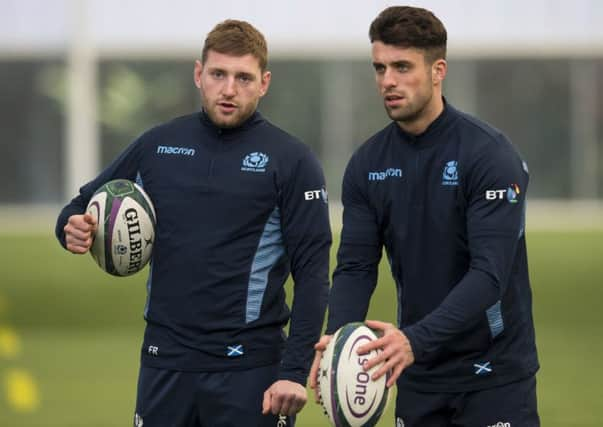Allan Massie: Hastings is fine prospect but Russell is picture perfect


So, while those of us who belong to that society recognise that young Hastings is coming along very nicely and is capable of holding his own – indeed of shining – at international level, we rather doubt Rennie’s judgment. This is of course rash, even presumptuous, since we recognise that he knows a hell of a lot more about the game than we do. My brother-in-law, also a member of the FRAS, suggested that perhaps Finn’s habit of shrugging off mistakes with a smile that conveys the message “if it didn’t come off this time, so what?” might not have endeared him to a stern New Zealander – even though Beauden Barrett and Dan Carter tend to display the same insouciance.
Be that as it may, there’s now fairly general agreement that Finn is one of the best No 10s in rugby today. It’s certainly the case that when he plays well Scotland look very good; if he is a bit off his game, we don’t. It’s undeniable that he is inconsistent. Flair players who seem to invent the game as they go along always are inconsistent; this is the case in every sport. It’s also true that those who make a game look easy are criticised more sharply when things go wrong. Consequently, Russell provokes the same sort of reactions as his Scotland, and former Glasgow, coach Gregor Townsend did in his playing days. Stand-offs who attempt less are usually more mildly criticised.
Advertisement
Hide AdAdvertisement
Hide AdYet, though there are obvious resemblances between Gregor and Finn – not least the way both are so often spoken of only by their first name – when I think of the stand-offs I have watched with delight and admiration over the years, it’s the great Welshman Barry John whom Finn most resembles. He was, of course, the brightest star on the most famous of Lions tours, the 1971 triumph in New Zealand, still the only series the Lions have won there. He was like Finn in both temperament and style. One thing in common was the ability to ghost through gaps, their acceleration so smooth that neither appeared or appear to be running at full speed.
John had a poor game the first time I watched him – Scotland-Wales at Murrayfield 1967 – and was immediately dropped by the Welsh selectors, every bit as fond of making changes as most of the amateur selectors were in the old days. It happened that I was with another – future – brother-in-law that day, the poet George Barker. George knew very little, if indeed anything, about rugby – football and boxing were his sports – but after the match he said, “that Welsh No 10’s a lovely player.” He had ignored the mistakes John made, probably hadn’t noticed them or recognised them as mistakes – but he had a poet’s eye for quality. One of the beauties of John’s game was that he never looked hurried, was never flustered. The same can be said of Finn.
Of course, the game has changed since John’s day. No stand-off could now get away with telling a back-row forward, “I don’t tackle – that’s your job”, and Finn is as resolute a defender as Barry wasn’t, even if it’s one area of the game in which his technique is sometimes wrong, as when he missed the French match this year because he had suffered concussion after getting his head in front of a hefty ball-carrier’s knees rather than behind them, a schoolboy error, or rather one which well-drilled schoolboys are taught to avoid. But whatever the difference between John’s day and the present, one thing remains true: even in a game as physical and, at times, brutal as rugby, especially modern rugby, there is still a place for the player who offers moments of aesthetic delight and makes what is actually very difficult look natural and easy.
There have been moments almost every time when I have watched Finn, as there were on the few occasions I was lucky enough to see Barry John in action, when he has offered such delight, making a picture that stays with you, like a cover drive from David Gower or Ian Bell or a low backhand volley from Stefan Edberg. You know you have seen something perfect.
The revered cricket writer Neville Cardus, describing the beauty of Frank Woolley’s batting, once found himself quoting lines of George Meredith’s poetry about a white owl swooping. Pulling himself up he said something like, “I admit, O Reader, that white owls have nothing to do with Woolley. I am merely trying to convey the impression that his batting made this afternoon.” I know just what he meant. There’s no logical comparison between the evening flight of a barn owl and Finn Russell ghosting through a nigh invisible gap; nevertheless…